In this article, we'll cover:
Customer Reviews: What They Are and How to Get Them
Customers are your greatest asset. Without them, your products, services and business would cease to exist. Finding ways to promote your business and improve customer experience is crucial. This is where reviews come in.
With customer reviews, you can provide social proof to potential shoppers that your business is the one for them. According to BrightLocal, 99% of consumers use the internet to discover business information.
Being present on popular review sites and having plenty of customer recommendations are vital for driving traffic your way and identifying pain points to improve your business for customers.
Read on as we go through everything you need to know to manage customer reviews for your business.

Why are customer reviews important?
77% of people trust customer reviews as much as personal recommendations or articles professionally written by domain experts. They use online reviews to scrutinise the experiences and satisfaction of previous patrons to determine business credibility and make a purchasing decision.
So, customer reviews play a vital role in the success of your business. They build something known as social proof, which is where people assume the actions of others are correct based on how often they see them.
For instance, if potential customers see a long queue of diners waiting to go into a packed restaurant, they naturally assume it’s a good place to eat. Why else would it be full and have people queuing up to go in?
The same concept applies to customer reviews. Potential customers are influenced by the number of positive and negative reviews surrounding them. It could be through friends, family, industry experts, influencers or complete strangers on the internet.
Social proof can shape your online reputation, for better or for worse. It can push hesitant prospects to make or abandon a buying decision based on how other people perceive your products, purchasing experience or service. Therefore, it’s crucial to take your business reviews seriously.
Customer feedback can provide valuable customer-centric insights into business performance and highlight areas of improvement for business services, employees and new products. Reviews can impact certain industries, as the chart from BrightLocal’s Local Consumer Review Survey 2022 shows below.
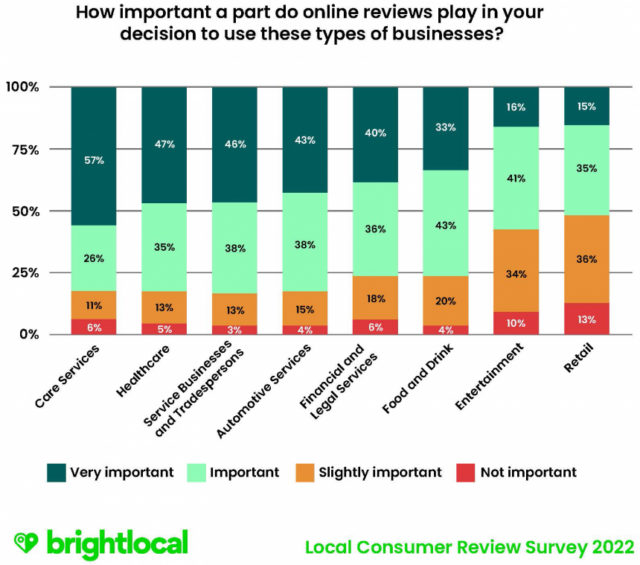
What kinds of customer reviews are there?
There are many different forms of customer reviews. While no template or format is perfect, each type of online customer review plays a vital role in promoting your large or small business.
1. Quotes
You’ve probably visited a website homepage or seen a marketing campaign that shares a customer quote or testimonial. They’re short sentences from a satisfied customer or influential person describing how your product, service or business has impacted their lives.
They’re occasionally accompanied by pictures of customers and allow you to portray your company in a positive light by choosing quotes to show off your customer service, prices, features and more.
Quote testimonials help build brand credibility as the claims they make come from actual customers or domain experts instead of just you, making them more believable.
It’s one of the most common and easy reviews you can showcase to customers, as you control the quotes and clients shared on your website or marketing materials. So, if you have a high-profile client or industry giant who speaks favourably about your business, you can use their quote to add legitimacy.
You can find quotes by asking customers, looking on social media or listening out for a mention of your business in the media or online. We’ll go over ways to ask for reviews in the next section.
2. Peer review sites
Peer-to-peer review sites refer to reviews on websites like Amazon, Google reviews, Facebook Reviews and Yelp. They’re unedited, written reviews often accompanied by star ratings, pictures or videos and come directly from the customer. It’s one of the first places customers look for purchasing advice.
For instance, if you’re on holiday and want to visit a local business, you might use Google reviews or Tripadvisor to decide if it’s worth a visit.

These reviews typically happen organically and are free from business interference. So customers see them as trustworthy, showing a balanced viewpoint instead of a favourable one, like quote testimonials.
Peer review sites can be unnerving for businesses who worry about bad or fake reviews destroying their online reputation. However, modern customers expect some fallibility. As long as most reviews are positive, customers will look your way.
3. Social media
You’re probably using social media to increase your brand recognition, visibility, credibility and customer base. Prospects can follow your account to find out what you offer, get customer support and make buying decisions.
But customers use social media to post reviews and opinions about their buying journey. It’s a vital resource for prospects to get an honest account of your products and customer experience.
Unlike peer-to-peer review sites, potential customers often know the reviewer or get a better feel for them by looking at their bio and social feed. It makes social media reviews akin to online word-of-mouth recommendations due to greater transparency from posters.
While fake accounts or reviews can occur on social media, digital customer literacy can suss them out quickly. Social media reviews are organic, but you can encourage customers to share reviews by using DMs, hashtags, or posts.
4. Case studies
Instead of customers penning reviews, case studies involve a business writing about how they impacted the customer’s life and helped them achieve their goals.
It’s a typical tactic in B2B selling strategies, letting businesses showcase their capabilities and skills, such as team workflows, problem-solving and attention to detail.
Customers can see how you work and identify if your product or service will provide value by comparing their needs with the needs you’ve met.
Case studies can be overly positive as they’re written by businesses. Try and get both perspectives by adding quotes, results, and data from your customers to back up your claims.
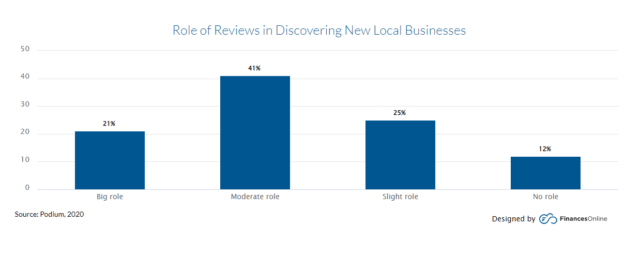
5. Customer stories and interviews
In every type of review, your potential customers look at how your business can help them succeed. They’re comparing the needs of current customers to discover if your products, services and customer experiences can assist them in reaching their goals.
Customer stories and interviews are one prominent way to connect prospects with, and allow them to see themselves in, the customers you’ve already helped. They’re often videos or website blog posts that show your diverse client pool, business vision, and how you helped the customer.
Unlike case studies, stories and interviews are focused on the customer and provide their perspective. Ensure they’re the centre of attention.
You can compile a series of customer stories for your website or marketing materials through in-person interviews or by sending customers a questionnaire.
6. Blog posts
Traditional customer reviews are short and focus on one aspect, such as delivery time, customer support or price. Even case studies are only a few hundred words, as they’re used to give prospects a taste of your business practices and capabilities.
Blog post reviews can be over a thousand words long and dig deep into business products, services, culture, and impact. They often have detailed steps and breakdowns with images, diagrams and videos accompanying the post.
Blogs are great for answering complicated queries and act as knowledge bases for potential customers embarking on a purchasing journey. Additionally, blog post reviews have big SEO value, with keywords and backlinks ranking you higher in search engines, letting customers find favourable reviews faster and driving customer experiences.
However, they can be difficult to get. While blogging is still popular, writing a descriptive, in-depth, long-form review isn’t everyone’s cup of tea. Consider offering free samples or product trials to bloggers, influencers or industry experts to get them interested.

7. Videos
With over 3 billion internet users watching videos at least once a month, you need to add videos to your business review arsenal.
Video reviews are typically filmed from customer perspectives and can appear on any platform, like YouTube, your website, or online ads. They can be filmed on a phone or in front of a video camera, so long as the customer message is clear.
Videos provide prospects with similar information as customer stories but have the added advantage of emotion and the ability to see how your products or services have helped.
For instance, a haircare brand might film a video with a customer demonstrating how their hair looks before and after using their products, showing customers the benefit of their products. Videos build stronger connections, leading to increased conversion rates.
There are two styles of video you can film. If you have the budget and resources, consider reaching out to customers and recording their stories in-house for your website and social channels. This way, you control the output and story.
Alternatively, reach out to influencers, industry experts, or YouTube creators and offer free trials or new products for honest reviews. While you have less control over reviews, it feels more organic to potential customers doing their research.
8. User-generated content
User-generated content refers to images, social media posts, videos, or other content posted by current customers about your products. They’re not reviews in the traditional sense, but they show happy customers using your products and services to add value to their lives.
It builds authenticity for potential customers and helps them stand in the shoes of your users by focusing on customer experiences.
But user-generated content doesn’t just work on its own. You need to propel posts from individuals so prospects can easily see them. For instance, some businesses, like mattress firm Casper, share user images and videos on their social media and website, providing a platform for positive customer views.

You can encourage your customers to create user-generated content by using social media hashtags or messages and asking customers to tag you in their posts. Then engage with them by commenting, liking, and sharing their content. It helps build stronger business-customer relationships and drives more users to get involved, furthering your review strategies.
9. Brand ambassadors
Brand ambassadors are loyal customers who love your products and enthusiastically recommend them to their networks. It’s likely you already have advocates promoting your business without even knowing it.
They’re effectively external marketers or sales teams but don’t need any special qualifications or a huge following to be successful. Their influence is directed, providing in-depth and high-value reviews for your business. Anyone can be a brand ambassador, including your employees.
For instance, Starbucks employees often share positive content online, like stories from their working day and newly available drinks. Customers see happy employees and associate the business with positive working environments, which can impact buying decisions.
Look for customers who can become brand ambassadors on social media and form a relationship with them. Offer them discount codes and an inside look at your business, and support them to promote your products and business to their valuable networks.
It can take time to build brand ambassadors naturally, and you may be tempted to pay. However, it’s best to nurture organic growth, as it’s more authentic to potential customers.
How to ask customers for reviews
Many of the 65% of customers prompted to leave a review by a business do just that. So, asking customers for reviews is a successful way to generate positive feedback for your business, products and services.
There are several ways to ask customers to leave reviews, but don’t think you have to stick to one specific strategy or do them all. Every business needs a different approach for its workflow and type.
Consider the best practices below as we look at how to ask for reviews.
- Identify the right moments to ask customers to leave a review
- Tap into moments of customer happiness
- Let them know how long the review will take
- Make the process as simple as possible
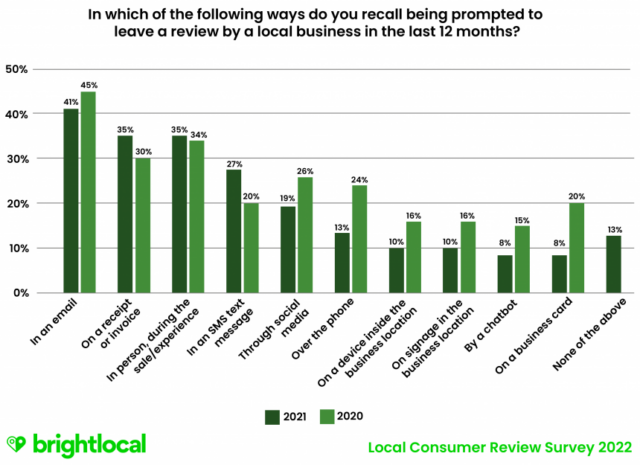
1. In person
If you interact with customers in person, you’re well-placed to ask them for online reviews. There are two ways you could do this.
The first is to ask for reviews from happy customers who give you unsolicited praise.
For instance, imagine working at a clothes retailer and helping a customer pick an outfit. At the checkout, they praise you for your assistance. Express your appreciation, and then suggest they write a review on your chosen platform.
The second scenario involves suggesting a review through conversation. Instead of waiting for customers to come to you, go to them.
For example, a customer comes to the checkout. You can start a conversation and ask them about their purchase, store experience, and products or services they’ve used. Then suggest they leave a review to help other customers.
It’s crucial in both these scenarios that you don’t request a review at the first possible opportunity, force a conversation with a customer that doesn’t want to engage, or aggressively ask for reviews.
It can make your assistance or friendly conversation seem disingenuous and turn a good experience into a bad one. With 40% of customers leaving reviews for negative experiences, you could inadvertently damage your business reputation.
Make the customer experience your priority. If their tone and body language seem positive, suggest they leave a review at the end of your interaction. It can improve the impact of your local SEO, driving brand visibility.
2. Over the phone (or via text)
Individually calling or texting customers for reviews can be ineffective and waste resources. But you can incorporate review requests into your everyday customer support, especially if this makes up a large portion of your business, for example, if you run a call centre.

For instance, if one of your call agents has just resolved an issue and the customer expressed their gratitude, you can ask them to provide a review on a platform of your choice. It’s a great time to ask, and if phrased correctly, you could make the customer feel appreciated, improving customer satisfaction and loyalty.
Remember that not all customers are happy with the support they’ve received, particularly if it’s taken several calls or transfers to answer their queries. Ensure your employees don’t ask unhappy customers for reviews so you don’t get damaging reviews.
When reaching out via text, you’ve two options. You can reach out personally to customers. If you’re a small business owner, it can help you engage with new customers and show off your unique, personalised customer service.
But for customer service teams or marketers, it’s easier to use SMS review request services to send automated texts after appointments or purchases, making the most of your time.
3. Through your website (ideally, a reviews page)
Your website is an essential tool for attracting customers and driving sales, especially if you’re an ecommerce store. So, ask for reviews through your site using a call to action (CTA) and a reviews page.
The CTA can be simple to tempt customers to share their experiences, like “Leave a review.” or “How did we do?”. It sends customers to the reviews page with existing reviews that act as templates.
A dedicated reviews page will be one of the first stops for potential customers researching your company. It’s easy to include one on your website via a plugin, script, or by adding them manually. Review pages increase your SEO impact and improve search engine ranking by providing critical keywords.

4. Email
Over 300 billion emails are sent and received each day, making email a crucial form of communication and ideal for asking for reviews. You can include a link to your chosen review platform, test out different messages and templates, or use alternative languages depending on your customers.
Additionally, emails are versatile in their capability. You can send out an email blast, personal emails, segmented emails, or add a review link to every email signature.
For instance, if you want to nurture better relationships with a few high profile clients, you could send them a personal email from the business owner thanking them for their business and asking for a review. It makes them feel appreciated and valued.
Similarly, you could ask every employee to send a few personal review requests to customers each day or week and add review links to their email signature. It can help grow your positive reviews and strengthen customer relationships, powering loyalty.
5. Social media (direct message or post)
There are over 3.5 billion social media users worldwide, making it a rife consumer hangout to target for customer reviews. Although you can ask for reviews on any social platform, some, like Facebook, have specific business review features. So, these are the best ones to target.
For instance, you could share a post linking to your review, asking customers to rate your recent performances. Similarly, you can share reviews customers have posted on your social feed or page. As well as engaging with current customers, you’re showing off your products, employee performances, and customer service to potential buyers.
Alternatively, you can reach out to individual customers via a direct message and leave a review request. It’s a personalised approach to making customers feel valued, improving their experience and leading to positive responses.
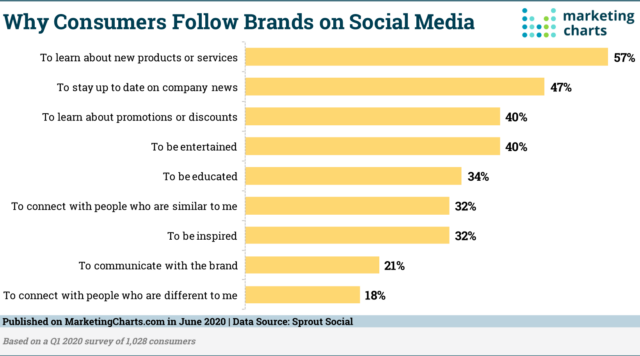
6. Thank-you pages
In each of the previous sections, we’ve mentioned how making customers feel valued leads to better reviews for your business. One way to show your appreciation to your customers is through thank-you cards and pages.
Thank-you cards are little cards you can put in product packaging with a QR code or details for a review page or phone number. They thank the customer and ask them to share their experience.
Thank-you pages are the modern embodiment of the card. They can pop up on screen after purchase or be sent via email immediately or a few days later. Sometimes, it’s better to wait until the customer receives their items before asking them to provide feedback, as product satisfaction can skew your review in the right direction.
Additionally, it lets customers post reviews at their leisure and makes them feel appreciated, even if they know it’s automated.
7. On receipts/invoices
Many customers check receipts and purchase orders to make sure they’ve been charged correctly. So why not add a little message asking for a review?
It can gather reviews from customers you might not have reached in other ways. You can easily add a link or QR code to your review page on:
- Physical receipts
- Digital email invoices
- Checkout page
Tips to organically get good reviews
75% of people feel good about businesses that have positive reviews. While good reviews depend on excellent customer service, you can nudge customers in the right direction to organically leave positive feedback about your business.

1. Put a “Leave a review” button on your website
When customers have a negative experience, they’re likely to go out of their way to make their complaints known with bad reviews. However, happy customers only leave reviews when prompted.
Make it easy for satisfied customers to share their experiences by incorporating a “Leave a review” button on your website. It could be on a landing page, product page, or in the navigation bar as long as it’s visible and easy to use for customers.
For instance, if you have a Tripadvisor review page, link your review CTA to your Tripadvisor page. Otherwise, customers would have to search for Tripadvisor, find your business, and look for a review link to leave feedback. It might be too many steps for a customer who has no motivation to review.
2. Put a floating popover on your website
A floating popover is a floating tab on the side of a screen, often showing a CTA or star rating. When someone hovers or clicks on it, a pop-up shows reviews for your products and services. It’s essentially a lighter version of a dedicated reviews page.
It’s great for potential customers to learn about your business. Additionally, incorporating a “Write a review” popover, or having a feedback option, makes it easy to write quick reviews. It reduces friction for customers who’ve had good experiences to review.
3. Validate reviews
As well as thanking customers for their reviews, you need to ensure authenticity so potential buyers aren’t turned away by fake reviews.
Online customer review platforms, like Trustpilot, verify customers have had a genuine experience with a business. It happens when a business uses Truspilot’s automated email invitation tool to ask customers to leave a review, as they can track where the review is coming from.
Additionally, it drives current customers to share their feedback as they see reviews from verified customers.

4. Place a feedback form on your website
Feedback forms simplify reviewing business services and products for customers. You can add them to purchase confirmation pages, product pages, or your marketing emails.
Third-party apps or plugins can create forms similar to Net Promoter Score (NPS) surveys. You can distribute the link to invite customers to share their experiences, especially those that don’t usually contribute.
5. Embed a feedback button on your website
Feedback buttons are often attached to the side, bottom, or top of a website and have a CTA, like “Review us”. When clicked, a feedback form pops up or overlays the screen. It lets website users report issues like bugs, suggest new features, and give customer reviews.
The purpose of feedback buttons is to make it quick and easy for customers to share their experiences. It doesn’t even have to be a written review. You could simply ask customers to select a star rating or have a small NPS-like survey.
6. Auto-display the reviews on your website
Put your reviews front and centre by auto-displaying them in various places on your website. As well as putting customer feedback on dedicated reviews or product pages, you can:
- Highlight them in a header
- List them in a sidebar widget
- Display them in a carousel
It can entice satisfied customers to leave a review and see their feedback on your website. With plugins and integrations, you can link your chosen review platform directly to the widget on your website, ensuring the latest positive feedback is available.
7. Add links to the reviews form
You may have created a reviews page or form on your website or a popular feedback platform. To get customers to submit positive reviews, you need to make your reviews page visible and accessible. Do this by adding customer communication links:
- In a social media post or bio
- To a link in your email footer
- On the bottom line of invoices and receipts
Happy customers don’t have a reason to post a review because they have no complaints. But if their favourite business asks for their help, they’ll be willing to give it.

How to get more reviews from top review sites
60% of customers consider the number of reviews a business has to be an important factor when considering which business to use. So, having many reviews across different review sites ensures customers can learn about you regardless of where they’re conducting their online research.
1. Google
Google is the world’s biggest search engine, with over 3.5 billion searches each day. Its free Google My Business tool allows businesses to claim and manage their online presence by putting business data on Google Search and Maps, making it brilliant for brick-and-mortar stores.
Additionally, customers can leave business reviews that prospects can see when they search for you on Google. To drive customers to share their experiences on Google, try:
- Sending out automated and personal review requests through email and social media
- Link your Google review page to your website
- Create a Google review landing page. It can boost SEO with added keywords and encourage users to leave reviews
- Create a CTA banner or button, like a floating popover or feedback button on your business homepage
2. Amazon
Amazon is one of the largest product marketplaces globally, with an established reviews system and business pages. As an Amazon seller, you can claim and customise your business page to highlight product details and testimonials. Additionally, you can collect and engage with customer reviews by:
- Sending automated emails post-purchase to thank customers for their purchase, ask for feedback, and drive traffic to your social channels
- Posting a review link on social media for your current customers who are likely satisfied
- Reaching out to users who have reviewed similar products to review yours. Consider providing a free sample or discount to top, trusted reviewers

3. Facebook
Facebook is the biggest social media platform, boasting over 2.89 billion active monthly users. With consumers interacting and posting reviews on social media, Facebook has become a crucial resource to research businesses with its business review features.
Customers have frictionless access to share feedback instantly to their network and any potential customer. To get more reviews:
- Claim your Facebook business page so customers know it’s you
- Ask customers to check in to your business, increasing the chance of positive reviews and automatically sharing posts with their network
- Add a CTA feedback button on your website to ask customers to leave feedback
- Manage and respond to all reviews, especially negative feedback, which will encourage more customers to leave reviews
4. Yelp
Yelp is a platform that has become synonymous with business reviews. Available as a reviews website and app, 53% of customers use Yelp to evaluate local businesses. Some ways to boost reviews from Yelpers include:
- Having a high response rate to encourage customers to leave feedback, as Yelp highlights your average response time and response rate
- Using auto-display widgets to show reviews on your business website and link to your reviews page
- Encouraging customers to check in on Yelp, sharing the business with other users
5. Tripadvisor
Tripadvisor is an online travel company that lets customers leave reviews for businesses they’ve visited. They have over 1 billion reviews potential customers can view on their website and mobile app, where users can book flights and reserve hotel rooms, restaurants, or travel experiences.
There’s no better place to ask customers to share their experiences, especially if you cater to tourists. Some tips to add to Tripadvisor’s extensive catalogue are:
- Ask guests to leave a review at the end of their visit, either in person or via an automated email
- Use review templates that are easy to fill out, such as rating scales. Your customers are on holiday, so make it simple for them to leave feedback
- Personalise the thank-you emails you send post-purchase or experience to show your appreciation. Always include visible links to your Tripadvisor review page

6. Better Business Bureau
The Better Business Bureau (BBB) helps consumers in the US, Canada, and Mexico find trusted businesses and charities. It’s a source of trusted customer reviews and offers scam reporting, reducing fake reviews.
By claiming your business, you can become accredited, increasing your credibility, visibility, and trustworthiness to customers. You can get more reviews by:
- Using the customer review generator to send a feedback request via text message or email
- Using BBB’s customer review toolkit, which comes with a review button for your website and templates for social media posts, email, blogs, and newsletters, to drive review traffic
- Sharing your positive BBB reviews with customers on your website and social media to instil consumer trust
7. Yellow Pages
Yellow Pages (YP) is a website and mobile app that provides listings for local businesses. Customers can leave business reviews, which you can manage after claiming your business listing. It’s one of the UK’s leading business directories, making it ideal for UK-based companies.
Increase your reviews through:
- Asking customers for reviews on social media, email, or in-person
- Following up with reviews, ensuring you address negative experiences
- Adding CTAs to your website, linking to your YP reviews page
8. Manta
Like YP, Manta is a business directory and review site, but it focuses on small businesses. It helps small businesses connect with local communities and network with other companies to build partnerships. If you’re a small business, claim your page to grow your business and increase reviews by:
- Running an email campaign to improve brand visibility and review page awareness
- Sending out personalised messages to new customers to review their experiences
- Adding a review link to your surveys or thank-you cards
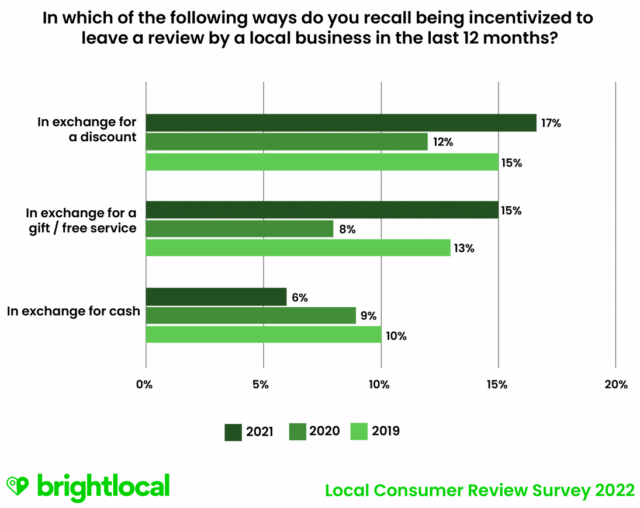
9. Angie
Angie is a home services website providing details, rankings, and reviews for service professionals. Unlike other options in this list, Angie is a paid review site. It leads to fewer fake reviews and trustworthy feedback.
Service companies are assessed according to their price, quality, responsiveness, punctuality, and professionalism. You can improve the number of reviews you have by:
- Asking customers to leave reviews with links on invoices, thank-you cards, and in-person. Let them know the review will help you improve your services
- Offering incentives for customers to review your business services
10. Foursquare
Foursquare City Guide is a local search and discovery app helping users discover new places or businesses based on community reviews. The app personalises recommendations based on user location and history. It also lets users post tips, brief reviews, and photos.
Some tips to increase your reviews on the site include:
- Sign up and claim your account to begin managing your business reviews
- Use Foursquare Swarm, the companion app to City Guide. It’s lifelogging for customers, keeping track of location history and check-in and letting them share where they’ve been
- Ask customers in person or on a receipt to leave a quick review if you’re a restaurant owner, as Foursquare is great for restaurants
How to respond to customer reviews
89% of consumers are likely or highly likely to use a business if the business responds to all customer reviews, regardless of whether they’re positive or negative. So, if you’re not acknowledging customer feedback via your review pages, you could be missing out on valuable business.
Additionally, you’re wasting the insights reviews provide into your business performances and practices. You must follow up with customers to understand their pain points and how to rectify them.

1. Positive reviews
Positive reviews are the holy grail of customer feedback for businesses. They boost company morale, improve online brand reputation, and show you what you’re doing well.
But it’s crucial you respond to positive reviews to let customers know you appreciate their praise, hear their feedback, and ensure they stay loyal. Here’s how to do it.
- Instead of using generic responses to thank customers, personalise your messages by taking time to think of a personal response
- Give your customer service team the freedom to inject their personality into the messages, adding authenticity and allowing you to connect with customers better
- Respond quickly to reviews, preferably within two days. It shows you listen to feedback and keeps customers engaged with your brand
- Recommend products or services to customers based on what they’ve reviewed. As well as showing you’re reading and taking time to respond, you can demonstrate your expertise and new products and provide value to customers. It can keep them engaged and coming back for more
- Some reviews are too good to be forgotten or have unique phrases that describe your company perfectly. Ask customers if you can use their feedback as quotes, testimonials, or user-generated content for your website, social media, and marketing materials
- Don’t keep stellar reviews to yourself. Showcase them to your potential customers.
2. Negative reviews
Negative reviews can be demotivating, damaging to your reputation, and tricky to respond to. However, they’re crucial for discovering the root causes of issues and improving your business.
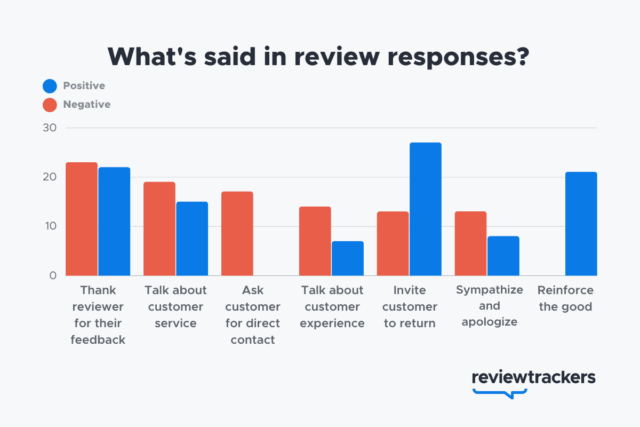
If responded to in the right way, responding to negative reviews can even convert unhappy customers to satisfied ones by the end of the process. To do this:
- Respond quickly. Unhappy customers can post on several platforms and spread damaging reviews to their entire network in a few short hours. By responding slowly, unsatisfied customers can be further frustrated
- Don’t get defensive. You may disagree with the review, but you must listen and solve customer complaints instead of arguing over who’s right. Then you can convert them into happy shoppers.
- Reply publicly to show potential customers you’re on the case and follow up privately to resolve the negative review. It prevents any further angry words from being posted on social media
- Don’t forget the customer after offering a solution or apologising. Follow up and ensure issue resolution. It shows you care about customers, which can improve your reputation and build new customer relationships
- No business is infallible. Taking down negative reviews destroys any trust you’ve built with unhappy and happy customers, who feel you’re papering over cracks and silencing voices.
Additionally, potential customers can be suspicious of overly positive reviews. By strategically responding to negative feedback and solving issues, you show prospects you take customer opinions seriously.
You may even benefit from a positive follow-up review from unsatisfied shoppers, boosting your reputation and conversion rates.
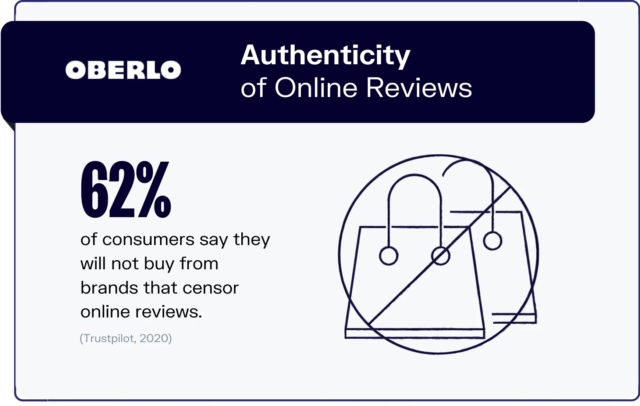
Conclusion
Customer reviews are essential for businesses. They share authentic experiences directly from customers, providing valuable social proof for potential shoppers to decide if you’ll meet their needs.
There are many types of customer reviews and review platforms available. The ones you use differ depending on your business type and audience. It’s important to drive customers to leave positive feedback on your chosen review platform, boosting your visibility and reputation.
You can nudge customers for reviews in several ways, but you must come across as genuine and don’t force feedback. Personalise requests and tap into moments of customer satisfaction to request feedback, improving the chance of positive reviews.
Finally, respond to all feedback. It keeps happy customers engaged and simply shows customer that you care.
Originally published Jun 20, 2022, updated Jun 21, 2022

